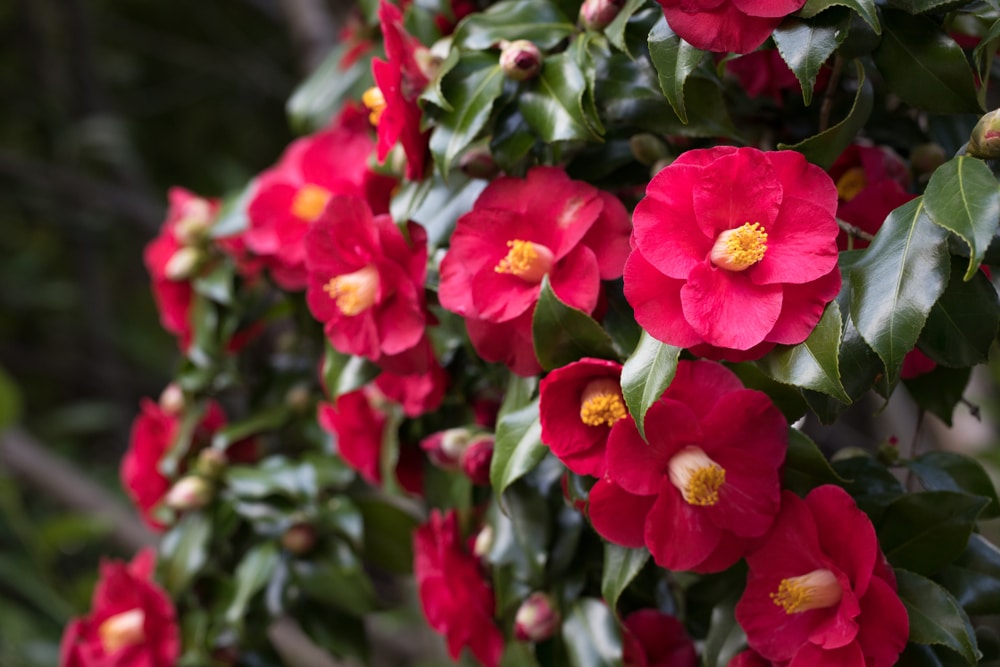If you’re like many camellia enthusiasts, you anxiously await the blooms every year. But what do you do if you’re wondering ‘why won’t my camellia flower/’ This blog post will discuss some potential causes of poor blooms in camellias.
By understanding the possible reasons for your plants’ lack of flowers, you can take steps to correct the problem and enjoy a beautiful display next season!
Camellias

Of all the flowering plants in the world, camellias may be some of the most beloved. These beautiful plants are native to Asia and have been cultivated for centuries.
Today, camellias are grown all over the world, and they are prized for their stunning flowers. Camellias come in many colors, including white, pink, red, and purple.
They can also be found in various sizes, from small shrubs to large trees. In addition to their beauty, camellias are known for their long blooming season. Some varieties will bloom from late fall through spring.
As a result, camellias are a popular choice for gardens that need a splash of color during the cooler months. Whether you are looking for a plant to add to your garden or a gift for a special occasion, camellias are sure to please.
Why Won’t My Camellia Flower?
One of the most sought-after blooms in gardens is the camellia. A flowering shrub native to Asia, camellias are known for their large, showy blossoms that appear in shades of white, pink, and red.
Why won’t my camellia flower? Unfortunately, camellias sometimes fail to bloom, leaving gardeners wondering what they did wrong. Here are a few possible explanations for why a camellia might not be blooming:
Unfavorable Soil Conditions
One of the main reasons why camellias do not bloom is because of unfavorable soil conditions. The soil’s pH level should be between 5.8 and 6.5 for camellias to bloom properly.
Another reason why camellias do not bloom is because of a lack of nutrients in the soil. Camellias need significant amounts of nitrogen, phosphorus, and potassium to bloom properly. A lack of any one of these nutrients can prevent camellias from blooming.
Soil that is too sandy or too clay-like can also cause problems for camellias. The plants need rich, loamy soil that will hold moisture but drain well. If you suspect the soil might be the problem, try testing the pH and adding some organic matter to improve the drainage.
Too Much Fertilizer
Camellias are beautiful flowering plants that are popular in gardens around the world. Though they are often prized for their flowers, camellias can also be grown for their glossy leaves and elegant growth habit.
However, camellias can sometimes fail to bloom, and one of the most common reasons for this is too much fertilizer. When camellias are overfertilized, they produce an abundance of leaves at the expense of flowers. In addition, too much fertilizer can lead to leaf scorch, a condition in which the leaves turn yellow or brown at the edges.
If you suspect that your camellia is not blooming because of too much fertilizer, you can try reducing the amount of fertilizer you use. This will most likely encourage the plant to start producing flowers again.
Too Much Shade
While camellias can tolerate some shade, they require a minimum of four hours of direct sunlight each day to bloom. If your camellia is not getting enough sun, the leaves will likely be pale green or yellow, and the plant will become spindly. If you suspect shade is the problem, try moving your camellia to a sunnier location.
Frost Damage
The delicate flowers are susceptible to damage from even a light frost, which can prevent them from blooming. In some cases, the buds may be killed outright by the frost, while the flowers may be damaged or stunted in other cases.
If you suspect that your camellia has suffered frost damage, there are a few things you can do to encourage it to bloom. First, prune away any dead or damaged growth. This will help to stimulate new growth. Second, apply a fertilizer designed for camellias. This will provide the nutrients needed for healthy growth and blooming.
If you live in a colder area you may want to choose a cold hardy camellia variety.
Drought
One of the most common reasons camellias do not bloom is frost damage. While camellias are native to tropical and subtropical regions, they are frequently grown in areas that experience frost in the winter.
The delicate flowers are susceptible to damage from even a light frost, which can prevent them from blooming. In some cases, the buds may be killed outright by the frost, while the flowers may be damaged or stunted in other cases.
If you suspect that your camellia has suffered frost damage, there are a few things you can do to encourage it to bloom. First, prune away any dead or damaged growth.
This will help to stimulate new growth. Second, apply a fertilizer designed for camellias. This will provide the nutrients needed for healthy growth and blooming.
Why won’t my camellia flower: Final Thoughts
Camellias are beautiful flowering plants that are popular in gardens around the world. Though they are often prized for their flowers, camellias can also be grown for their glossy leaves and elegant growth habit.
However, camellias can sometimes fail to bloom, and several potential causes exist. If your camellia is not blooming, try testing the soil and adjusting the fertilizer accordingly.
In addition, make sure that your camellia is getting enough sun and water. If you suspect frost damage has occurred, prune away any dead or damaged growth and apply a camellia fertilizer. With a little care, your camellia should start blooming again.
Related article: Growing Camellia in Zone 7
